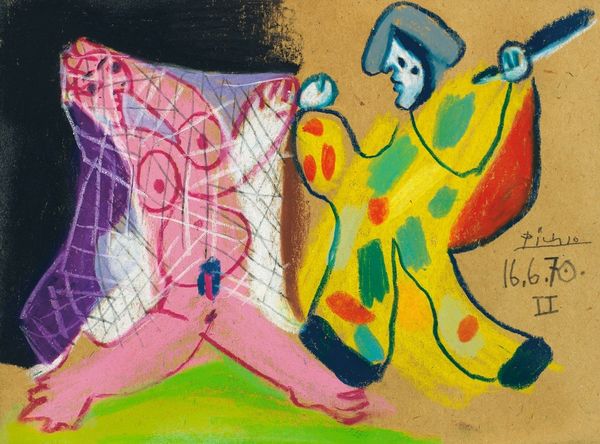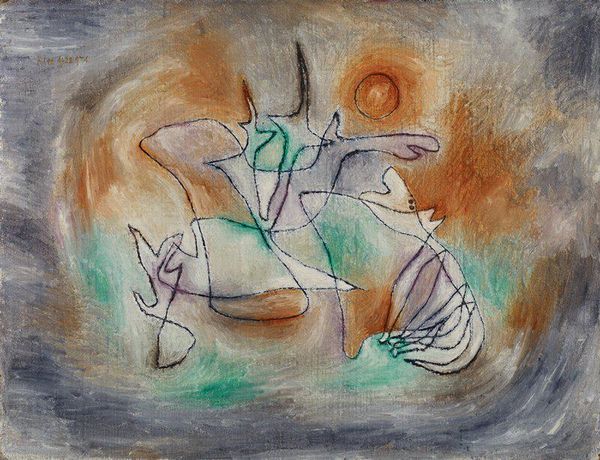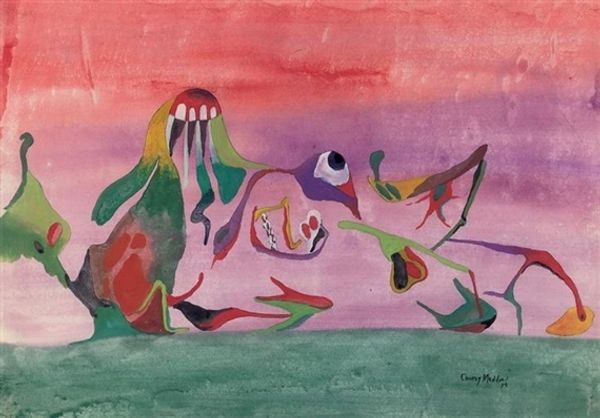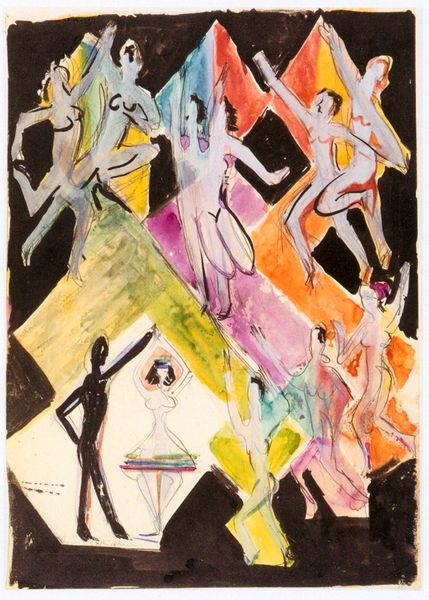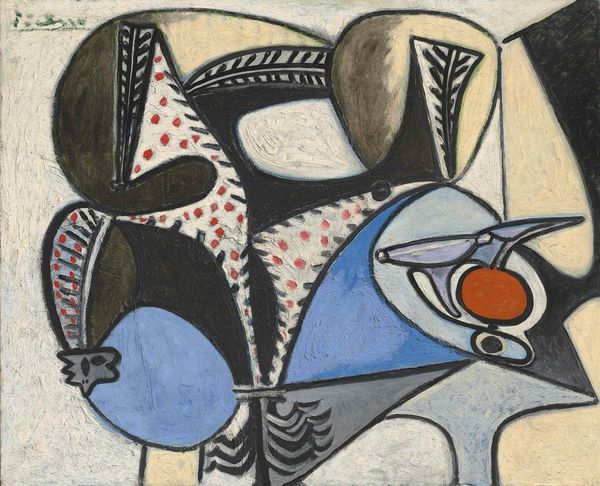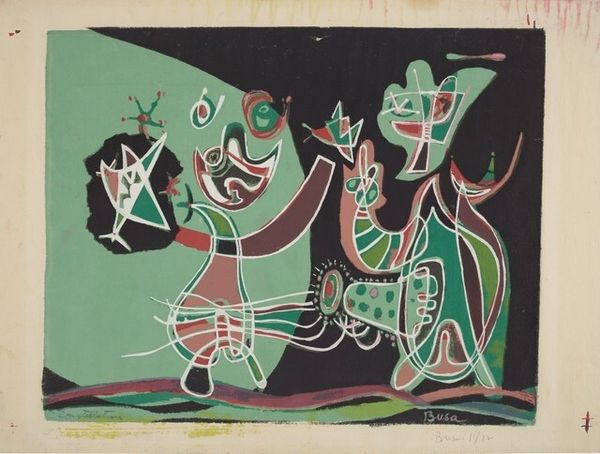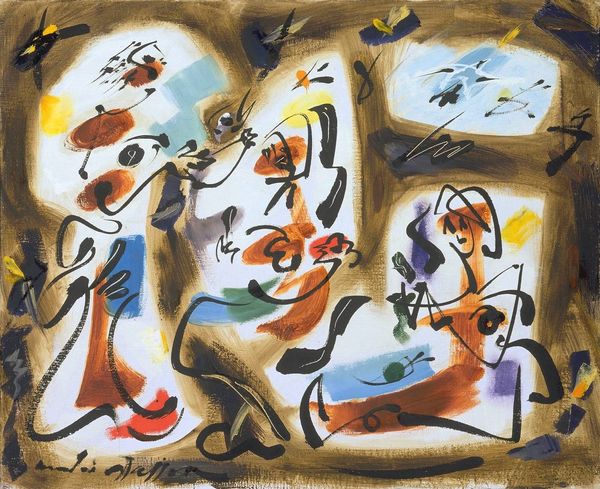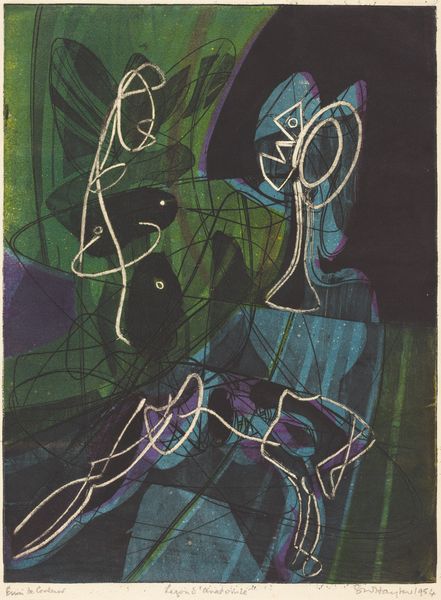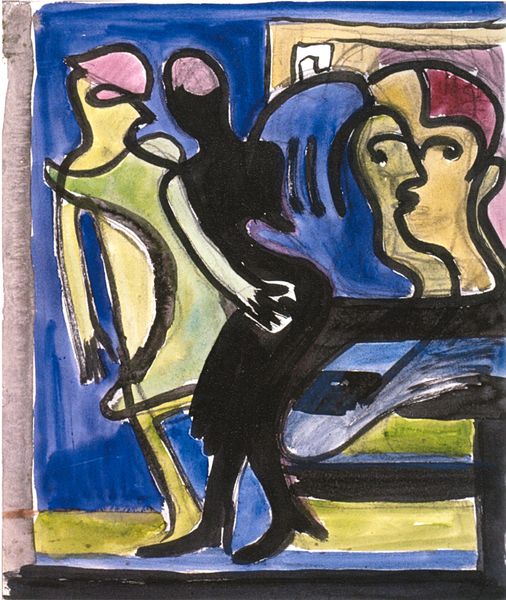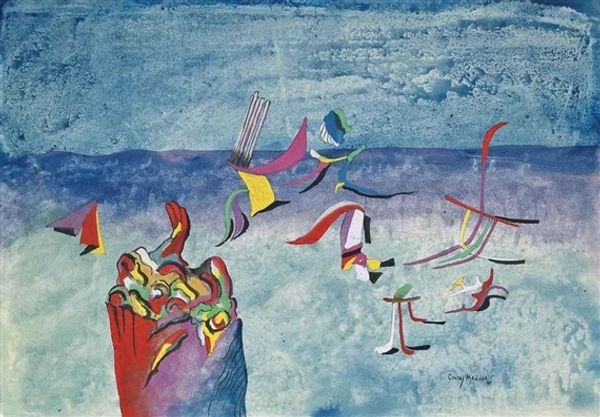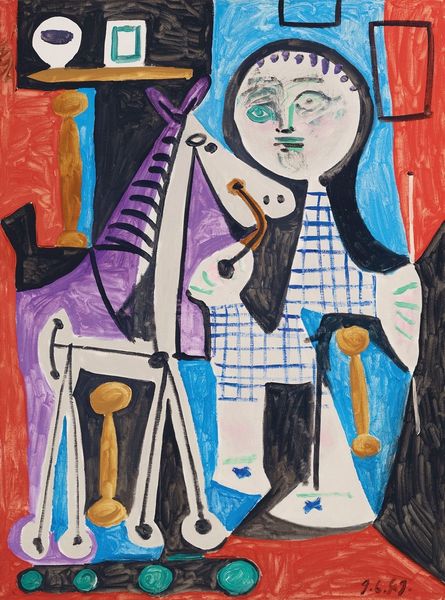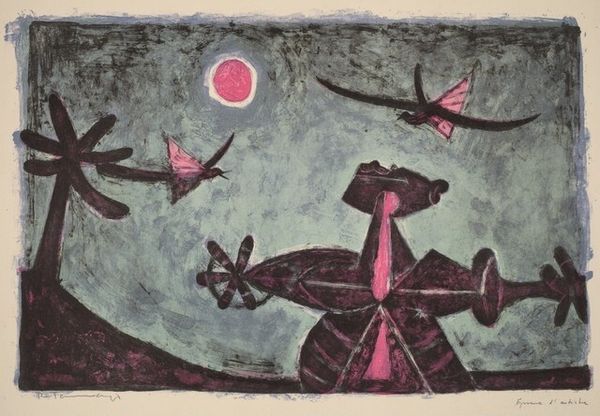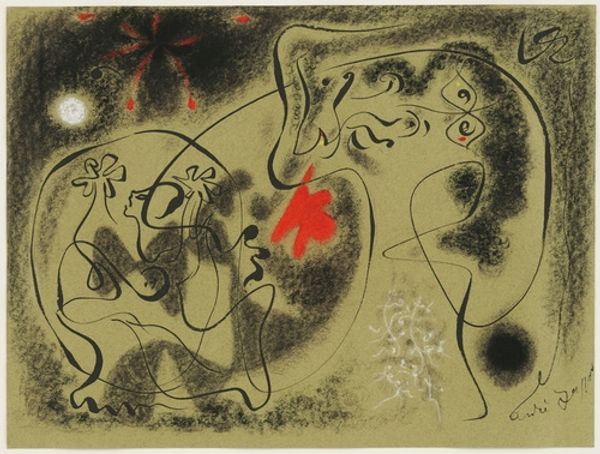
Copyright: Modern Artists: Artvee
Pablo Picasso's "Le Cirque" is a painting that explores themes of performance and the human condition, rendered in his distinctive style. Dominating the canvas are figures reminiscent of circus performers and mystical creatures, set against a dark, enigmatic backdrop. Consider the symbol of the crescent moon held aloft by one figure; it is an ancient emblem linked to divinity, mystery, and the cyclical nature of life. We see echoes of this in earlier depictions of lunar goddesses, from the Greek Selene to the Roman Diana. The moon, in Picasso's hands, transcends mere representation; it becomes a potent psychological symbol, evoking dreams, intuition, and the hidden aspects of the self. This motif reminds me of how the snake biting its own tail appears in alchemy and mythology across many cultures, representing eternity and cyclicality. Similarly, Picasso’s crescent moon invites us to ponder the recurring patterns in our lives. In "Le Cirque," the theatricality and dreamlike quality of the circus become a metaphor for life, where performers play out their roles under the watchful gaze of celestial symbols.
Comments
No comments
Be the first to comment and join the conversation on the ultimate creative platform.
